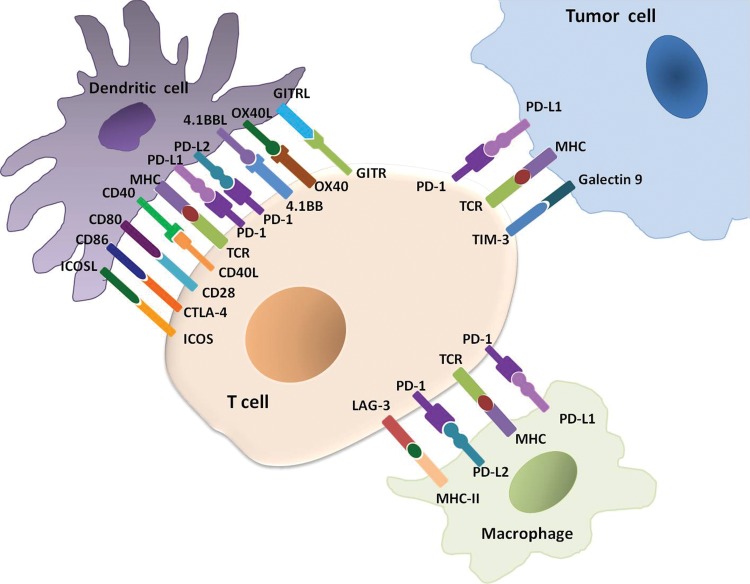Figure 1:
Immune-checkpoint molecules between tumor cells and immune cells in the tumor microenvironment. A number of inhibitory receptors and ligands are expressed on T cells, dendritic cells, macrophages, and tumor cells in the tumor microenvironment and serve as critical mediators of immune suppression by tumors. These receptor-ligand pairs, such as programmed cell death ligand 1 (PD-1)/programmed cell death protein ligand 1 (PD-L1) in the T cell and tumor cell interaction, are called “immune checkpoint” molecules. The blockade of these checkpoints using immune-checkpoint inhibitors such as PD1/PD-L1 inhibitors and cytotoxic T-lymphocyte antigen 4 (CTLA-4) inhibitors have emerged as successful treatment options for a variety of advanced cancers. (Modified from references 4 and 5.) GITR = glucocorticoid-induced tumor necrosis factor receptor-related protein, GITRL = GITR ligand, ICOS = inducible T-cell co-stimulator, ICOSL = ICOS ligand, LAG = lymphocyte activation gene, MHC = major histocompatibility complex, TCR = T-cell receptor, TIM = T-cell immunoglobulin and mucin domain.

